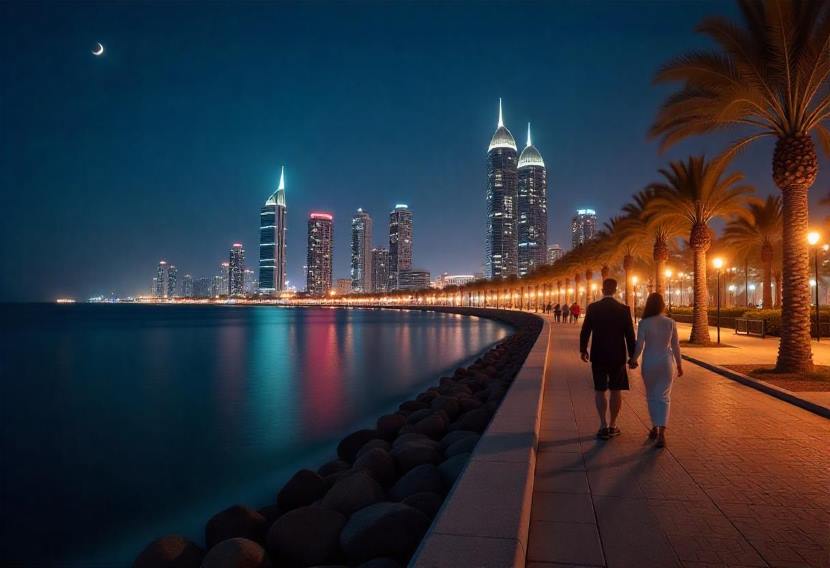≡-Spain Issues Heatwave And Storm Warnings For Tourists, Here’s What You Should Know More – Viral of Today
<> Viral of Today <>
Home » TRAVEL ALERT » Spain Issues Heatwave And Storm Warnings For Tourists, Here’s What You Should Know More Saturday, July 12, 2025Spain prepares for one of its worst weather phenomenon on record, as the authorities post dire warnings of an impending heatwave and potentially devastating storms to various parts of the country. While British holidaymakers totalling millions travel to Spain during the warmer season, they are now requested to adjust traveling schedules so that they can stay within their radar while heat continues to increase and fierce weather that’s likely to attack them gathers momentum. The increased heat and imminent threats from storms are likely to seriously impact the traveling experience to many.Severe Heatwave Hits Southern SpainSouthern Spain and Andalusia, especially, are in the throes of a severe heatwave, and the mercury has crossed 45°C in parts already. The Spanish state weather agency, AEMET, reports that the temperatures are shattering regional records, and the blast of hot air from Africa is responsible. The weather phenomenon, which began earlier this week, should intensify during the weekend and spill over to the subsequent week, exerting considerable pressure on tourists and residents alike.The situation is especially dire in Andalusia, which sees cities such as Seville, Cordoba, and Granada struggling to cope. Officials predict this heatwave might prove among the most severe this decade, topping even July temperatures that by their nature are considered extreme.Health and Safety Risks During HeatwavesThe extreme heat poses significant health risks, especially for vulnerable groups such as the elderly, young children, and individuals with pre-existing medical conditions. Spanish health authorities have issued warnings urging tourists to remain indoors during the hottest hours of the day, typically between 11 am and 3 pm. Experts suggest that during these peak hours, outdoor activities should be avoided, and people should stay in shaded areas or air-conditioned spaces.Dehydration, heat exhaustion, and heatstroke are serious concerns when dealing with extreme temperatures. Tourists are advised to drink plenty of water and avoid alcohol and caffeine, as these can contribute to dehydration. Light, breathable clothing is recommended, and travelers should wear hats and sunscreen if they must go outside. Other than ensuring correct hydration, the NHS recommends cold showers or applying cold water to the skin to help the body regulate its temperature. Where accommodated in a hotel or other form of lodging, windows should be kept closed during the day to avoid letting heat in and opened at night when the temperature has dropped. Where the heat is extreme, as in cities such as Seville and Cordoba, finding air-conditioned locations such as shopping malls or museums is recommended.Northern Spain Faces Thunderstorms and Flooding RisksWhile southern Spain grapples with suffocating heat, the north regions of the country are dealing with a different kind of extreme weather phenomenon: storm and heavy rainfalls. Northern cities such as Bilbao, Pamplona, Santander, and Basque Country are to face heavy thunderstorms and flooding. The General Directorate of Civil Protection and Emergencies (DGPCE) has posted warnings on said regions, cautioning them about sudden and strong rainfalls that promptly cause flooding on roads and low areas.The Basque country, Cantabria, and Navarre are forecast to experience the most rainfall, and showers will persist over the weekend, the Met Office said. As the showers build up, there’s a higher risk of flash floods that might cause travel problems, especially among those traveling by car in rural or flood-prone regions. The torrential rains and slippery roads might also create travel complications among those using public roads or those traveling through rural regions, which tend to have fewer roads.Road Safety During Storm and FloodingFor drivers intending to travel by car within north Spain while stormy weather prevails, authorities recommend exercising utmost caution when on the road. Drivers should slow down and refrain from traveling on roads that are at risk from flooding. Flash flooding is sudden, and cars that are left parked near flooding or flood-risk zones may become carried away or destroyed by rising floodwaters. The DGPCE highly urges drivers to use major highways and populated roads whenever feasible since they tend to receive minimal flooding effects. The tourists should also avoid parking close to areas where there is flooding risk, and should shelter on higher ground when faced by heavy showers rather than staying near ground which tends to be low-lying. Thunderstorms additionally pose another danger through lightning, particularly to those who happen to be on open countryside or on roads. When confronted by a lightning storm, the tourists should avoid standing near trees or objects which tend to be metallic, as lightning tends to be attracted there.Preparing for Severe Weather: Key Guidelines for TouristsAs the climate in Spain varies between scorching heat by the southern regions to turbulent storms by the north, tourists need to adopt proper precautions to prevent injury and damage to belongings. The Spanish authorities, in conjunction with the DGPCE, have put forth the following guidance to tourists.Stay Informed: Keep up-to-date with weather forecasts, particularly if planning to travel between regions. The AEMET and DGPCE websites provide real-time updates on weather conditions, including heat alerts and storm warnings.Steer Clear of Peak Heat Hours: Visitors should refrain from active tasks, like tour excursions or mountain climbing, during the hottest day hours. Find air conditioning, especially between mid-day and mid-afternoon hours.Road Precautions: If you are driving to the north of Spain, always check the weather and road conditions frequently. Travel on major roads and highways to prevent areas prone to flooding, and always take extra care while driving on rainy days.Thunderstorm Safety: While there is a thunderstorm, stay inside and do not go to open areas, like fields or beaches. Go inside a strong building, and stay away from windows and doors, and do not stand near trees or metal fences.Hydration and Attire: While traveling to southern Spain, staying well-hydrated is essential. Bring light clothing and use sunblock to prevent sunburn. Wear a large-brimmed hat and sunglasses to prevent sun exposure, too.Impact on Spanish Tourism from Extreme Weather SituationsAs over 18.4 million British tourists visit Spain throughout 2024, the weather warnings impact many’s holiday plans. British tourists have always ranked Spain one of the leading destinations, and this year’s heatwave and storms may make some tourists refrain from engaging in their planned activities. However, Spain’s tourist infrastructure, particularly its big cities like Madrid, Barcelona, and Seville, is properly equipped to handle such circumstances and offers numerous indoor attractions like visits to museums, shopping, and eateries.Despite the challenging weather, Spain’s tourism industry is resilient, and many visitors will still flock to enjoy its cultural and historical landmarks. Tourists planning to visit during this period should take extra care and consider adjusting their schedules to accommodate the extreme conditions. It is advisable to check with local authorities for updates on travel conditions, as disruptions from the weather could affect both road and air travel.Conclusion:Safety First and Plan According to It The ongoing heatwave and storms in Spain serve as a stark reminder of the power of extreme weather, particularly during the summer months. While the country remains a top destination for travelers, the safety of all visitors must come first. By staying informed, adjusting travel plans, and following safety recommendations, tourists can continue to enjoy their Spanish holiday while minimizing the risks posed by these extreme weather events.Tags: andalusia, Barcelona, Basque Country, Bilbao, cantabria, heat safety, Pamplona, spain, Spain heatwave, spain tourism, storm warnings, Tourist Safety, travel advice, Valencia
This information will surprise you!
See also
- Read until the end to discover everything.
- Important information you need to know.
- Interesting facts and helpful tips.
Conclusion
Did you enjoy the news? Keep following us daily!













